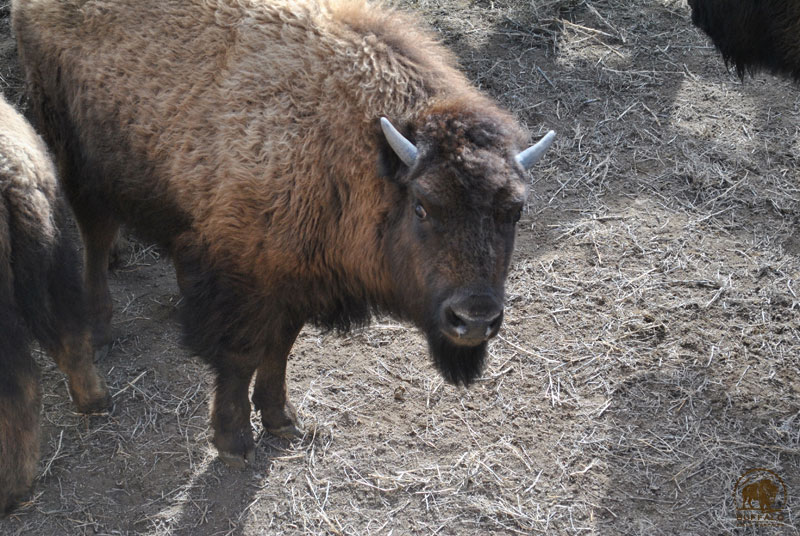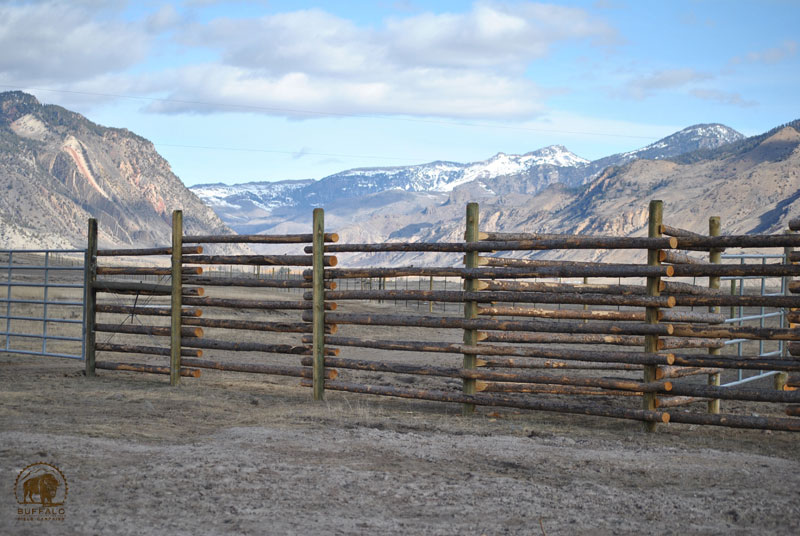This terrified buffalo calf is a prisoner within Yellowstone National Park’s Stephens Creek buffalo trap, destined for slaughter. Yellowstone says the trap is there to serve the IBMP, which serves Montana’s livestock industry.
Buffalo Field Campaign attended the August 3rd Interagency Bison Management Plan (IBMP) meeting in Bozeman, Montana. Morning discussions revolved around the expansion of habitat into the Taylor Fork area of the Gallatin River, part of the buffalo’s newly gained ground which they haven’t chosen to use in many decades. Natural migration, translocation, and assisted migration were discussed as ways the buffalo may actually utilize this habitat. The agencies didn't make any specific decisions on this but suggested a technical committee convene to answer these questions on suitable habitat, private interests etc. Buffalo aren’t naturally migrating north into that area these days, but when they decide to, BFC will support them all the way. The sad reality is, during the 1990’s, the Montana Department of Livestock killed so many buffalo that were migrating in that direction that it’s possible they killed the herd memory to take that route. There’s also the possibility that lodgepole pine trees that have grown back since the 1988 fires in Yellowstone may be choking the corridor they once used. Perhaps, one day, fires will open it up again and the buffalo will find their way back.
Yellowstone Superintendent Dan Wenk, representing the National Park Service, said that winter operation plans for the 2017-2018 season remain unchanged and had no information in regards to how many buffalo they plan to kill this winter. Yellowstone is also planning on using a portion of the Stephens Creek buffalo trap as a quarantine facility. When Dan Wenk was questioned by an Indigenous representative of the IBMP about whether the "upgrades" to the Stephens Creek Facility meant upgrades to the existing structure or expansion upon the existing structures to increase the number of buffalo the trap could hold, he was insistent that it was just an upgrade to the existing facility and that no expansion has taken place. But BFC has documented enormous new fencing, expanding beyond the existing trap, and this fencing is currently holding more than fifty bull buffalo under pseudo-quarantine conditions, something we strongly oppose.
This is part of Yellowstone’s Stephens Creek buffalo trap. It’s new fencing, built within the last couple of years. It expands the trap much further north and is currently being used to hold bull buffalo who were captured in the past two years, destined for quarantine (domestication). Clearly the trap has been expanded. This photo shows some of the new fencing.
Indigenous representatives stressed that although their treaties supersede the IBMP, they are still playing by the IBMP's rules. Tribes blamed the IBMP, stating that by adhering to it, they are being forced to hunt in relatively small areas. This often creates situations with numerous hunting parties crammed onto small landscapes and going after the same groups of buffalo. Such situations give the impression, especially among local residents, that tribal hunts are chaotic and unsafe. Many residents seem to forget that the Indigenous hunters' connection to these lands are thousands of years old. Public safety concerns were brought up but residents were informed that there are extensive safety measures imposed by the different hunting groups and that law enforcement is present whenever a hunt takes place.
Ryan Clarke gave a presentation highlighting the findings of the recent brucellosis study by the National Academy of Sciences (NAS). Elk were highlighted as the main concern for brucellosis transmission to livestock. As we reported earlier in the summer, elk are now in the crosshairs of livestock interests and the governments that serve them. And while the NAS found that buffalo were not the culprit, they recommended business as usual. BFC recommends removing cattle from the Greater Yellowstone region as livestock, not buffalo nor elk, are the problem.
Dr. Clayton Marlowe gave a presentation on plant studies he has been conducting in both the Gardiner and Hebgen Basins. His presentation was very informative in regards to the amount of available forage in the different plant community types. He mapped out what he and his crew deem to be potential buffalo habitat relative to available forage, slope, and historical use by the buffalo. Relying on that information, he developed a scientific approach to estimating the carrying capacity of these two areas. The numbers he found are under a hush clause by the U.S. Forest Service (USFS). Information on his findings can't be made public until the USFS "sufficiently" reviews the information. When Mary Erickson, USFS, was asked if the information is able to be obtained through FOIA the answer was "no.” Whatever this study reveals, the earth chose the buffalo—along with prairie dogs and other species—to be the creators and care takers of the Great Plains. Buffalo manage their own habitat, they know their needs, and they can help restore what has been lost.
Every one of these meetings I've attended has reinforced the notion that this culture values the domestic over the wild. It’s all about control for profit. Very little is ever really accomplished. The buffalo know where they want to be whether this culture wants to admit it or not. Human beings have created these conflict areas by finding themselves in every nook and cranny on earth bringing the baggage of domestication and civilization, subduing both indigenous human and non-human communities in the wake. It's time to remember that we as humans are but temporary visitors on the earth. Do we care about what we leave for future generations, both human and non-human? Given the circumstances, that answer would be a definitive "no." Here's to hoping that this culture starts to question and act to create a positive outcome in all of this mess.
For the wild!


